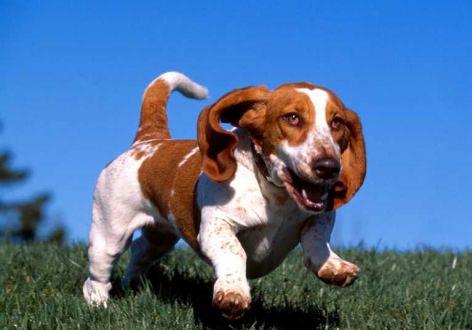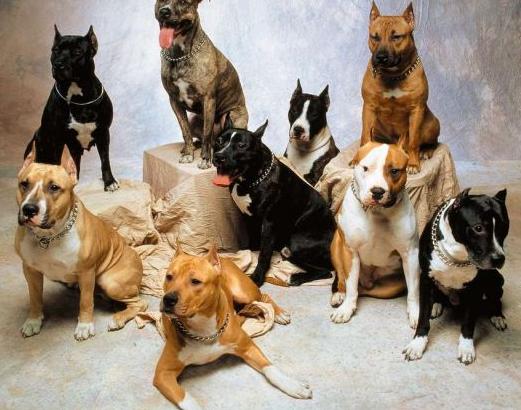Today we have vaccines to help prevent many of the killer dog diseases -- and antibiotics to treat some diseases when they do strike. With the proper series of preventative vaccinations, your dog will most likely never suffer any of the diseases listed in this section, but we've described them just in case.
The Not-So-Magnificent Seven
There are seven common and potentially fatal canine diseases you should protect
your dog against with regular vaccinations: canine cough (also known as kennel cough), coronavirus, distemper, canine infectious hepatitis, leptospirosis, parvovirus (or "parvo" for short), and -- the most dreaded of all -- rabies.
Canine cough. This is a respiratory infection common to any situation where many dogs are kept together, such as kennels (giving rise to the name "kennel cough"), animal shelters, and pet stores. The infection causes the trachea, larynx (voice box), and bronchi (the little branching tubes in the lungs) to become inflamed. Succumbing to the bacteria Bordetella bronchiseptica, an infected dog will develop a mild to severe cough, sometimes with a runny nose, five to ten days after exposure. It can be treated with antibiotics and plenty of rest, which is very important. As with all the Not-So-Magnificent Seven, prevention is the most sensible and humane choice. If you plan to board your dog or will be exposing her to many other dogs, be sure she's protected against Bordetella. The "double whammy" is often a good strategy: a liquid vaccine administered through the dog's nose combined with an injection for canine parainfluenza virus.
Coronavirus. A usually mild disease, coronavirus is spread when a dog comes in contact with the stool or other excretions of infected dogs. Although it rarely kills dogs, coronavirus can be especially hard on puppies or dogs who are stressed or not in the best of health. Suspect coronavirus if your dog is depressed, doesn't want to eat, vomits -- especially if it's bloody -- and has a bad case of diarrhea. Exceptionally strong-smelling stools, particularly if bloody or with a strange yellow-orange color, are also signs. If coronavirus is diagnosed, the veterinarian will give your dog plenty of fluids to replace those lost from the vomiting and diarrhea, as well as medication to help keep the vomiting and diarrhea to a minimum. A coronavirus vaccination is usually recommended if your dog will be meeting lots of other dogs -- or their excrement -- at parks, dog shows, kennels, and other boarding facilities.
Distemper. Around the world, more dogs die from distemper than any other infectious disease. This highly contagious virus is spread by direct contact or through the air. A hale and hearty dog can survive distemper, usually with relatively mild symptoms. On the other hand, if your dog's immune system doesn't come out fighting, her whole body can be overwhelmed by the virus, as well as bacteria that jump in to cause secondary infections.
Distemper usually happens in two stages. Three to fifteen days after exposure to the virus, the dog develops a fever, doesn't want to eat, has no energy, and her eyes and nose become runny. As time passes, the discharge from her eyes and nose starts to get thick, yellow, and gooey -- the classic sign of distemper. If you haven't taken your dog to the vet before this symptom appears, you should take her now. Other first-stage signs of distemper are a dry cough, diarrhea, and pus blisters on the stomach. The second stage of distemper is even more serious, because the disease can begin to affect the brain and even the spinal cord. A dog in this stage might slobber frequently, shake her head, or act as if she has a bad taste in her mouth. Sometimes she has seizures, causing her to circle, fall down, and kick her feet in the air. Afterward, she seems confused, wandering around and shying away from people.
















 The Mighty Kong: Introduced in 1976 this toy established the standard in the dog toy industry for durability. Enthusiastically endorsed by veterinarians, dog breeders, and dog trainers, Kong leads the market in dog toys. Able too last through years of vigorous play and action, Kong was created by a dog owner whose German Shepherd (Fritz) loved to chew on rocks. The rock chewing created wear- and- tear on Fritz’s teeth.
The Mighty Kong: Introduced in 1976 this toy established the standard in the dog toy industry for durability. Enthusiastically endorsed by veterinarians, dog breeders, and dog trainers, Kong leads the market in dog toys. Able too last through years of vigorous play and action, Kong was created by a dog owner whose German Shepherd (Fritz) loved to chew on rocks. The rock chewing created wear- and- tear on Fritz’s teeth.








